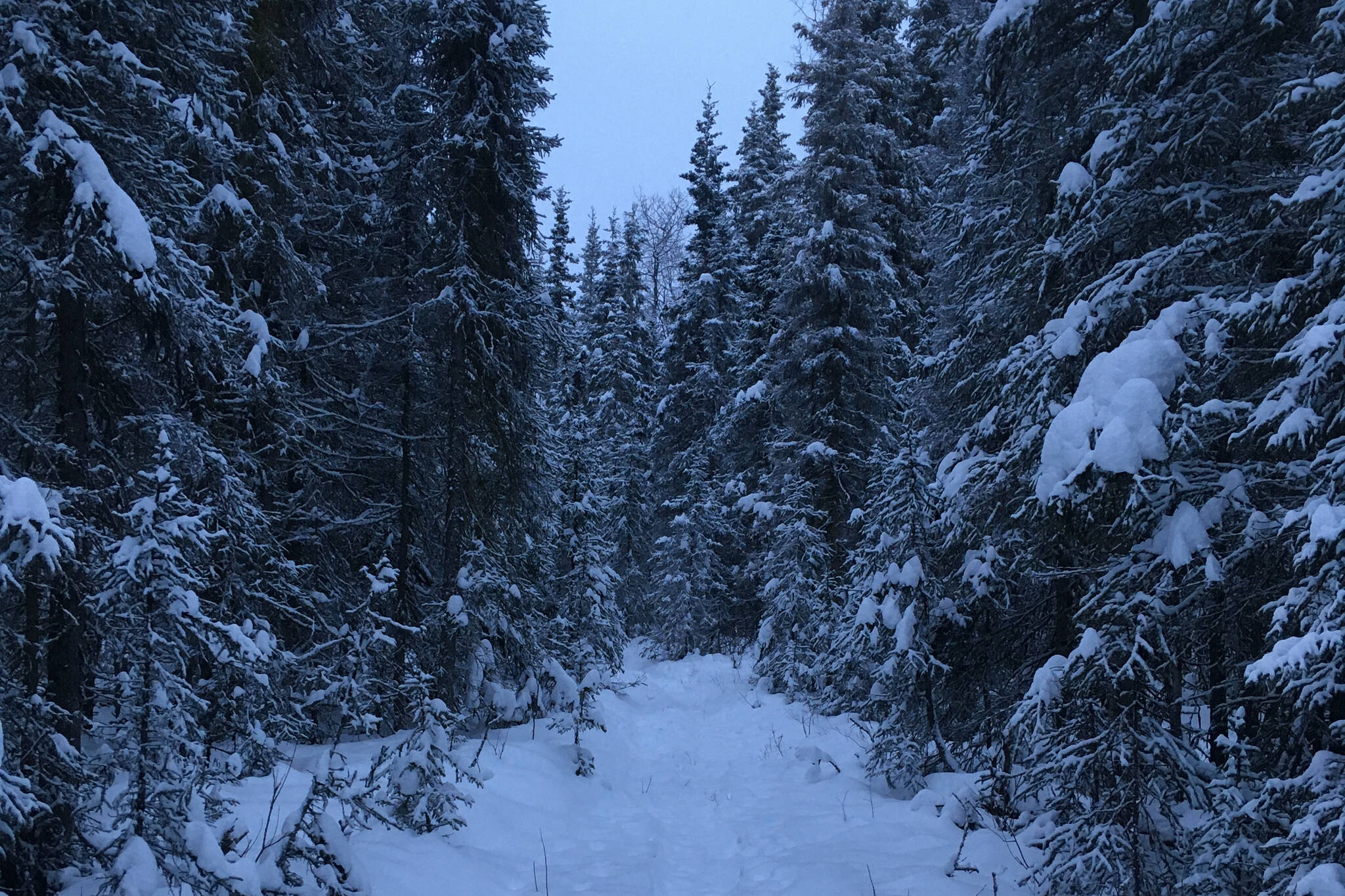Kenai Peninsula residents will soon be allowed to cut down a Christmas tree in many lands throughout the borough. In both the Kenai National Wildlife Refuge and on borough-owned land, trees can be cut between Thanksgiving and Christmas Day, though opportunities are also available through the state.
Protocols vary depending on where the tree is cut, but all agencies make available resources to help people know whether they’re barking up the right tree.
In the Kenai National Wildlife Refuge
The refuge allows Christmas trees to be cut between Thanksgiving Day and Christmas Day. Trees are free for personal use, are limited to one per household and cannot be taller than 20 feet. Trees can be taken with hand tools anywhere in the refuge except for within 150 feet of a road, lake, stream, trail, campground or picnic area. Trees cannot be cut near the Kenai National Wildlife Refuge Headquarters and Visitor Center area, or along Ski Hill Road. The public is also asked to trim tree stumps as close to the ground as possible.
More information about cutting Christmas trees on KNWR land can be found on the refuge’s land management website at www.fws.gov/refuge/kenai/.
Borough land
Christmas trees can be cut on land owned by the Kenai Peninsula Borough for non-commercial purposes between Thanksgiving Day and Christmas Day as part of borough rules related to casual use. The borough limits trees to one per individual and asks for members of the public to cut tree stumps as close to the ground as possible.
The cutting of Christmas trees on borough-owned land is considered to be casual use if it involves “minimal disturbance” to land and the appearance of property and does not involve vehicles or machinery that disturbs ground surface or creates trails. Additionally, the land use cannot create a hazard or disturbance to the surrounding area and must be conducted on vacant property that is not already being used, leased or sold.
More information about cutting Christmas trees on borough-owned land can be found on the borough’s land management website at www.kpb.us/landmgt/.
State land
The Alaska Department of Resources allows Christmas trees to be cut on unrestricted state lands and limits each household to one tree no taller than 15 feet for non-commercial use. Trees cannot be cut in state parks and along state rights of way, as wells as on Alaska Native lands and other private property.
DNR asks that members of the public cut trees as low to the ground as possible and requests that they be mindful of other people cutting trees and residents who live in the area. Additionally, DNR advises people traveling on forest roads to bring appropriate gear and clothing in the event of an emergency, as forest roads are not maintained by the Division of Forestry.
More information about cutting Christmas trees on state-owned land can be found on DNR’s website at www.dnr.alaska.gov/commis/pic/christmastree.htm.
Chugach National Forest
The Chugach National Forest limits Christmas tree cutting to one tree per household, which cannot be sold or used in a commercial exchange. Permits and fees are not required. Trees should be cut at least 200 feet away from main roads and 450 feet away from picnic areas, campground units, administrative facilities, trails and bodies of water.
Trees should not be felled into streams or other bodies of water and stumps should be no higher than 6 inches tall. “Topping” trees is not allowed — the entire tree except for the stump should be removed.
Tree-cutting is not allowed from the Seward Highway up Portage Glacier Road to Portage Lake, from north of the Turnagain Pass Rest Area at Milepost 30 of the Seward Highway to the Bertha Creek Campground at Milepost 65.5 or at the Exxon Valdez Oil Spill easement lands, near Valdez.
More information about cutting Christmas trees in the Chugach National Forest can be found www.fs.usda.gov/detail/chugach.
Reach reporter Ashlyn O’Hara at ashlyn.ohara@peninsulaclarion.com.

